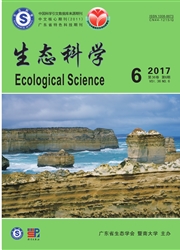

 中文摘要:
中文摘要:
以广州地区常见暖季型草坪草(地毯草Axonopus compressus、狗牙根Cynodon dactylon、结缕草Zoysia japonica)为研究对象,通过测定植物根系AMF侵染率、根际土壤AMF孢子密度以及土壤理化性质,探讨AMF侵染率和孢子密度的季节动态变化特征,以及与土壤理化性质之间的关系。结果表明:(1)三种草坪草的根系AMF侵染以菌丝侵染为主,总体表现为夏季最高,秋季和冬季次之,春季最低,囊泡侵染率较低,很少丛枝侵染;(2)季节对根际土壤AMF孢子密度有一定的影响,草坪草根际土壤孢子密度最大值多出现在夏季或冬季,而春季和秋季则较低;(3)对于土壤因子,AMF菌丝侵染率与土壤有机质含量成极显著正相关,而囊泡侵染率与电导率成显著正相关,与全氮和全磷成极显著负相关;对于气候因子,AMF总侵染率和菌丝侵染率均与月均气温和月均降水成极显著正相关。
 英文摘要:
英文摘要:
The rhizosphere AMF colonization rates, AMF spore densities, and soil properties of three common warm season turfgrasses in Guangzhou, Carpet grass (Axonopus compressus), Bermudagrass (Cynodon dactylon) and Zoysiagarss (Zoysia japonica) were tested to explore seasonal dynamic characteristics of AMF colonization intensity and spore density, as well as the potential relationships between them and the soil physico-chemical properties. The results showed that: (1) Both total AMF colonization rates and hyphae colonization rates were the highest in summer, followed in autumn and winter, and the lowest in spring; AMF vesicle colonization rates were relatively low throughout the year and few arbuscular colonization was found. (2) The rhizosphere spore density of AMF was influenced by season, and the highest values were found in summer or winter, while the relatively lower values appeared in spring and autumn. (3) Hyphal colonization had an extremely significant positive correlation with organic matter, while vesical colonization was positively correlated with electrical conductivity and negatively correlated with total N and total P; AMF total and hyphal colonization rates were significantly positively correlated with average monthly temperature and rainfall.
 同期刊论文项目
同期刊论文项目
 同项目期刊论文
同项目期刊论文
 The Relationship Between Carbohydrate Concentration and Vesicular Arbuscular Mycorrhizas Colonizatio
The Relationship Between Carbohydrate Concentration and Vesicular Arbuscular Mycorrhizas Colonizatio 期刊信息
期刊信息
